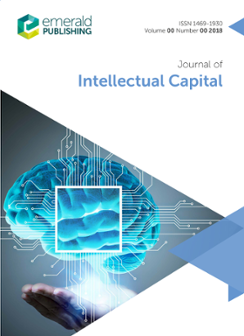Measuring innovative literacy: conceptualization, scale development and validation
IF 6.8
2区 管理学
Q1 BUSINESS
引用次数: 0
Abstract
PurposeThere is a need to understand the role of innovative literacy in intellectual capital literature. This study aims to develop the innovative literacy scale, starting from the framework of innovative literacy, which is not prominent in the literature. Accordingly, this study develops and validates an innovative literacy scale.Design/methodology/approachA quantitative research methodology was used for this study, whereby a unipolar 5-point Likert scale self-report questionnaire was designed. Scale development analyses were performed in three steps: (1) The first item pool was created by literature review; (2) preliminary quantitative testing of the reliability and validity of the items, including confirmatory factor analyses (CFA), was performed; and (3) final scale validation through a discriminant and validity test was done using descriptive factor analyses (DFA) and structural equation modelling (SEM).FindingsFor the developed scale, the sample size was 220 in the first stage, 440 in the second stage, and 457 in the third stage. The validity and reliability analyses of the results were completed using Statistical Package for the Social Sciences (SPSS) and Analysis of Moment Structures (AMOS) programs. After the preliminary stages, the validity and reliability tests of the scale were carried out, and 17 items (in 4 dimensions) of the innovative literacy scale were finally developed.Research limitations/implicationsThis research fills a conceptual gap in the literature. However, since this concept is evaluated using the human, customer and structural components of intellectual capital, future researchers may examine this concept together with other features of intellectual capital and with larger samples.Originality/valueThe article contributes to understanding innovation by developing a scale to evaluate InnoLiteracy, which may be an essential factor influencing innovative literate behaviours. The perceived multi-dimensional scale of InnoLiteracy will be beneficial for academicians and human resources professionals. Although there are studies in the related literature on the importance of the concept of innovative literacy, a scale from the perspectives of intellectual capital and sustainable innovation will be unique since there is no tool for its measurement yet. The findings of the InnoLiteracy research are meaningful, and the scale has the potential to meet the needs of researchers, schools, government agencies and businesses.衡量创新素养:概念化、规模发展和验证
有必要了解创新素养在智力资本文学中的作用。本研究旨在从文献中并不突出的创新素养框架出发,开发创新素养量表。因此,本研究开发并验证了一个创新的识字量表。设计/方法/方法本研究采用定量研究方法,设计单极5分李克特自我报告问卷。量表开发分析分三步进行:(1)通过文献综述建立第一个题库;(2)对项目的信度和效度进行初步定量检验,包括验证性因子分析(CFA);(3)使用描述性因子分析(DFA)和结构方程模型(SEM)通过判别和效度检验进行最终量表验证。开发的量表样本量第一阶段为220人,第二阶段为440人,第三阶段为457人。采用社会科学统计软件包(SPSS)和力矩结构分析(AMOS)程序完成结果的效度和信度分析。经过初步阶段,对量表进行效度和信度检验,最终编制出创新素养量表的17个条目(4个维度)。研究局限/意义本研究填补了文献中概念上的空白。然而,由于这一概念是使用智力资本的人力、客户和结构成分来评估的,未来的研究人员可能会将这一概念与智力资本的其他特征和更大的样本一起研究。独创性/价值本文通过开发一个评估创新素养的量表来帮助理解创新,创新素养可能是影响创新读写行为的重要因素。对学者和人力资源专业人士而言,“创新素养”的多维尺度将是有益的。虽然相关文献对创新素养概念的重要性进行了研究,但由于目前还没有测量工具,因此从智力资本和可持续创新的角度来衡量创新素养的量表将是独一无二的。InnoLiteracy研究的结果是有意义的,其规模有可能满足研究人员、学校、政府机构和企业的需求。
本文章由计算机程序翻译,如有差异,请以英文原文为准。
求助全文
约1分钟内获得全文
求助全文
来源期刊

Journal of Intellectual Capital
Multiple-
CiteScore
14.50
自引率
13.30%
发文量
27
期刊介绍:
The Journal of Intellectual Capital is a peer-reviewed international publication dedicated to the exchange of the latest research and best practice information on all aspects of creating, identifying, managing and measuring intellectual capital in organisations. The journal publishes original research and case studies by academic, business and public sector contributors on intellectual capital strategies, approaches, frameworks, tools, techniques and technologies in order to increase the understanding of intellectual capital within the context of the modern knowledge economy. The focus of this journal is on the identification of innovative intellectual capital strategies and the application of theoretical concepts to real-world situations.
 求助内容:
求助内容: 应助结果提醒方式:
应助结果提醒方式:


